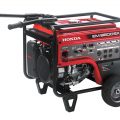If we plan to commercialize our works, patenting is only the start and we should also know how far we should bring the idea. Other than licensing the patent, we may also consider to start a company to commercialize the idea. The more work we do, the less uncertain our partners could be and the bigger our profit. The “idea” stage should be the first phase and idea is usually roughly defined. We may need to add things to perform functions and establish certain properties.
This should allow us to have a more developed idea where specifications, materials and relevant specs can be modelled and quantified. Developments may include building product prototypes and CAD models. With proper standards in documentations, we should be able to find out the manufacturing costs quite accurately.

By producing prototypes, we should be able to test our product concepts and refine them. The next step is to perform small-lot manufacturing process and this is an opportunity to look and find solutions of manufacturing problems. Before we commence with large volume production, we should be able to deal with most issues and perform further improvements.
In any case, we should let people to evaluate our ideas and suggest proper changes. We also often need to identify trade-offs between product specifications, costs and features. During this last stage, we should already address all legal issues and regulation requirements. It is important to establish quality specifications; especially we already know product costs. There are a number of risks related to licensing of the invention.
Some people could claim that they have developed similar things in the past and they want to ask for royalty. In some cases, we may need to do some amount of modification to make sure that products are different enough from the competition. Larger companies excel at refinements and distributions of existing products. They are also more capable of using latest technological implementations to make their products more superior.
On the contrary, start-ups are unable to afford enough high technology or combine different technologies. However, large companies may be more reluctant to upset their current products by introducing new things, especially if they are making a lot of money from them. Due to high research and development costs, new products usually represent smaller profit margins than older ones.
In general, it is important to manufacture proper equipments and produce new products at much lower costs, then sell them at much higher prices. New products can be rather disorderly, especially if they are early batches, where mistakes and errors could affect the production lines. In general, it is better to deliver new products as complimentary items to current products. High sales should bring more potential in terms of profitability.
For products with smaller niche, it is a good idea to be particularly unique and self-manufacture them instead of ordering them from companies who deal with sub-contracting products from companies who have ideas and early technological ideals.
The Author’s hobbies includes playing football, video games and learning small business seo services tips and tricks






























